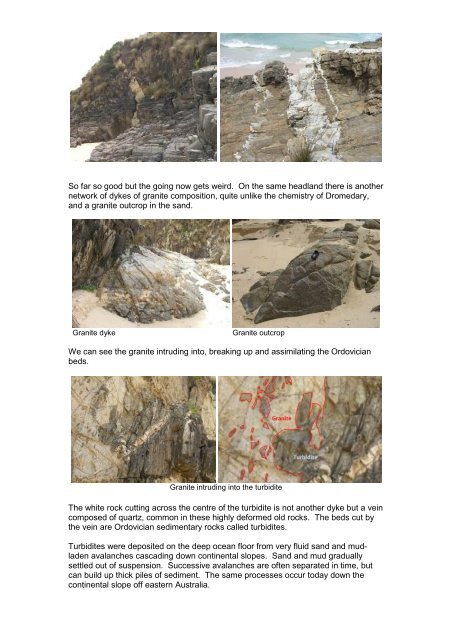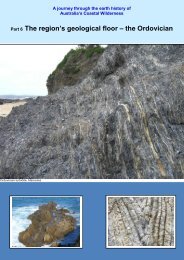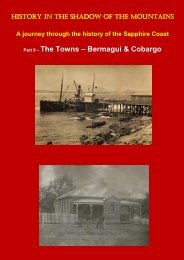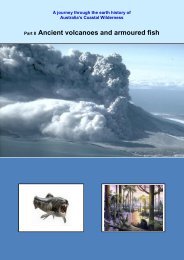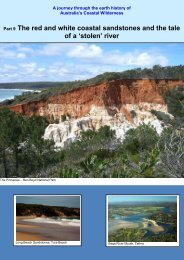2 The story of Granite and Bega Cheese - Sapphire Coast
2 The story of Granite and Bega Cheese - Sapphire Coast
2 The story of Granite and Bega Cheese - Sapphire Coast
Create successful ePaper yourself
Turn your PDF publications into a flip-book with our unique Google optimized e-Paper software.
So far so good but the going now gets weird. On the same headl<strong>and</strong> there is another<br />
network <strong>of</strong> dykes <strong>of</strong> granite composition, quite unlike the chemistry <strong>of</strong> Dromedary,<br />
<strong>and</strong> a granite outcrop in the s<strong>and</strong>.<br />
<strong>Granite</strong> dyke<br />
<strong>Granite</strong> outcrop<br />
We can see the granite intruding into, breaking up <strong>and</strong> assimilating the Ordovician<br />
beds.<br />
<strong>Granite</strong> intruding into the turbidite<br />
<strong>The</strong> white rock cutting across the centre <strong>of</strong> the turbidite is not another dyke but a vein<br />
composed <strong>of</strong> quartz, common in these highly deformed old rocks. <strong>The</strong> beds cut by<br />
the vein are Ordovician sedimentary rocks called turbidites.<br />
Turbidites were deposited on the deep ocean floor from very fluid s<strong>and</strong> <strong>and</strong> mudladen<br />
avalanches cascading down continental slopes. S<strong>and</strong> <strong>and</strong> mud gradually<br />
settled out <strong>of</strong> suspension. Successive avalanches are <strong>of</strong>ten separated in time, but<br />
can build up thick piles <strong>of</strong> sediment. <strong>The</strong> same processes occur today down the<br />
continental slope <strong>of</strong>f eastern Australia.


